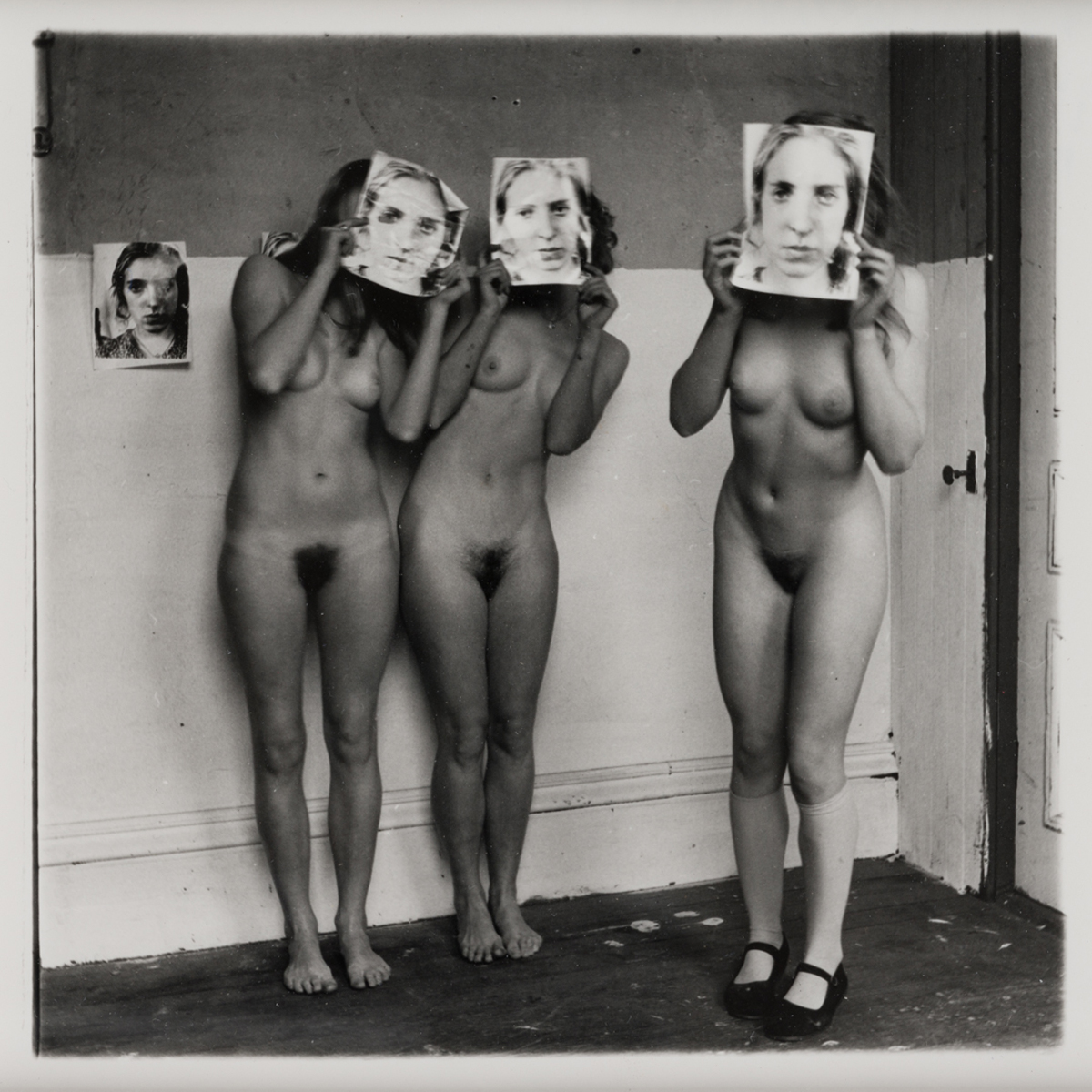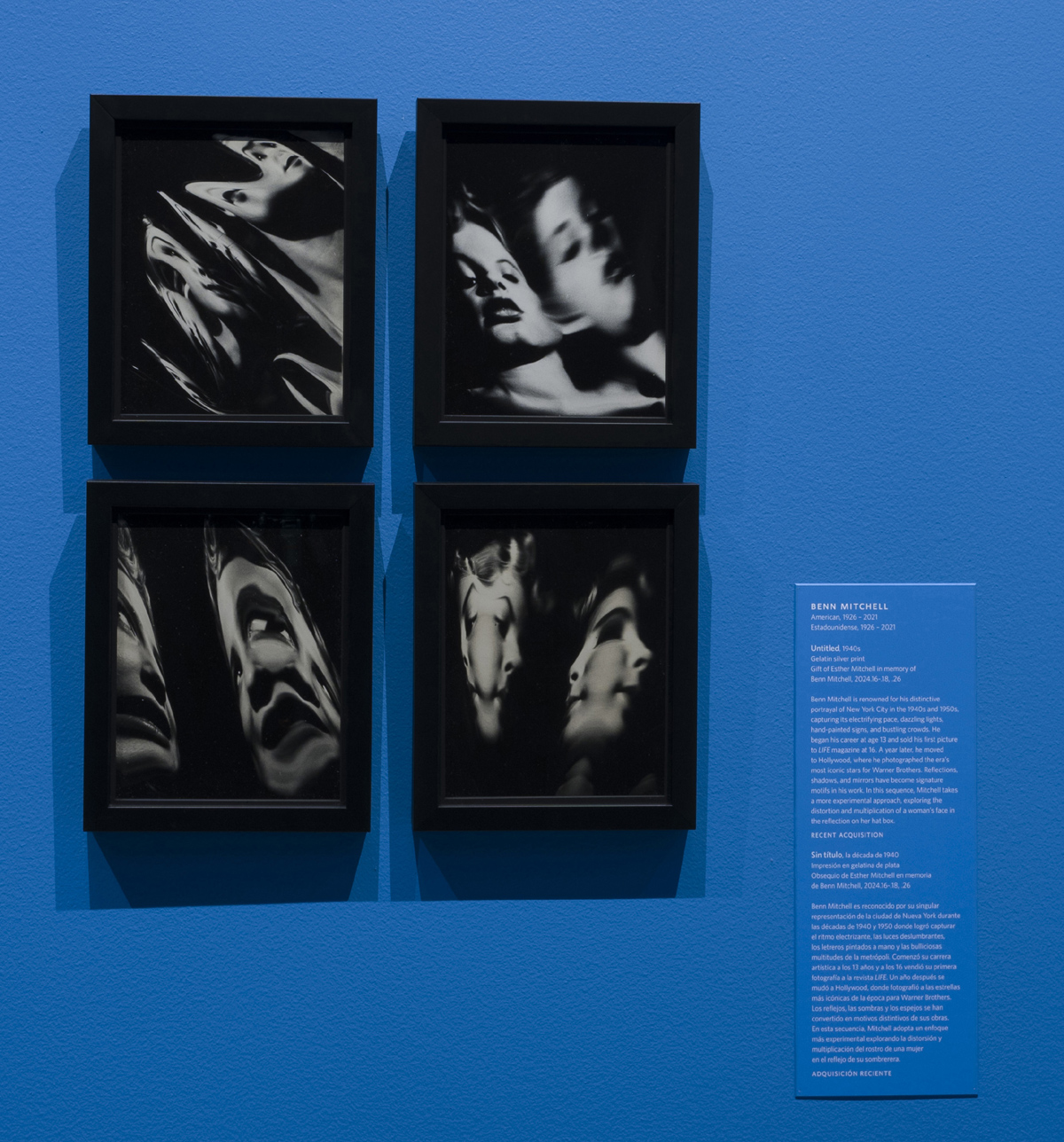Whitehot Magazine
October 2025
"The Best Art In The World"
"The Best Art In The World"
October 2025
SHUTTERBUGS--"Blur/Obscure /Distort: Photography and Perception" at the Norton Museum of Art
 Sandra Kantanen (Finnish, born 1974), Untitled (Distortion 8), 2016, Pigment print,18 7/8 x 13 3/4 in. (48 x 35 cm). Collection of Ellen Shapiro, Palm Beach, FL © Courtesy of the artist Sandra Kantanen and Purdy Hicks Gallery
Sandra Kantanen (Finnish, born 1974), Untitled (Distortion 8), 2016, Pigment print,18 7/8 x 13 3/4 in. (48 x 35 cm). Collection of Ellen Shapiro, Palm Beach, FL © Courtesy of the artist Sandra Kantanen and Purdy Hicks Gallery
By Bruce Helander July 16, 2025
“Blur/Obscure /Distort: Photography and Perception,” the current ambitious exhibition at the Norton Museum of Art in West Palm Beach, literally exposes a delightful and engaging premise. Paradoxically, these conceptual subjects investigate novel images that go well beyond the original objective of early experiments in photographic principles. The opposite of ‘blur,’ for example, is sharp focus. ‘Obscure’s’ opposite is explicit and clear. ‘Distortion’s’ opposite was clarity and perfection, which was the visual goal, from the get-go, of dynamic photographic explorers. Consequently, this memorable exhibition, insightfully curated by Lauren Richman, William and Sarah Ross Soter Senior Curator of Photography at the Norton, offers viewers an intelligent and surprising novel collection of selective modern photographic inventions at its best. At the moment almost everyone, young and old, now has immediate access to producing photographic images with the advent of digital cameras in their phones that produce high quality imagery in an instant that can be delivered electronically in an instant. Thus the “shutterbug” label, an informal term for an enthusiastic amateur photographer, especially one who is very enthusiastic about photography, still fits even today. It’s also a term used to describe someone who enjoys taking pictures like the professional photographers in this stimulating show. The word “shutter,” refers to the camera’s shutter light/exposure mechanism and “bug,” a type of slang for someone obsessed with a particular activity.
To get a true perspective and comparisons on this show, it is necessary to briefly look back at the earliest efforts of humankind who utilized communicative signals that evolved from basic sign language and hand motions to recognizable pictures painstakingly carved in rocks for posterity. It was inevitable that portraiture and identifiable imagery were developed thousands of years ago, which were the only permanent methods to record a primitive tribe’s history, and in the case of the Aztecs, carving out curious silhouettes of humanoids that were a distant precursor to early photographic advances.
It likely never occurred to anyone at the time that someday one could instantly record precise portraits or urban environments with an instant click of a lens. A camera remained a rarity and a novelty until Kodak produced the Brownie Starmite, requiring a run to the drugstore for darkroom processing, turning a generation into picture makers. But in general, a camera was a tool for documentation on special occasions. Now millions of amateur photographers snap and share billions of images each day.
Modern and contemporary photographic explorers from Eadweard Muybridge to Man Ray and Robert Mapplethorpe opened the doors to allow photography, once only seen as utilitarian, to explore the medium as a fresh method of expression such as sidewalk discoveries that were cropped into abstract expressive arrangements. Photographer Aaron Siskind’s historic homage to Franz Kline pushed the modern snapshot into a category of chronicling non-figurative painterly wall smears that could be condensed into a bonafide abstract masterwork. Photography has taken over as the undisputed tool for conserving history and it continues to be a remarkable artistic device as demonstrated in this enlightening show.
The artists in “Blur/Obscure /Distort: Photography and Perception” urge greater awareness about the constructed nature of perception and, in turn, a photo’s vulnerability to manipulation even when it appears to show what is “real,” notes curator Richman. As an historic perspective, the first photographic camera was invented by Joseph Nicéphore Niépce in 1816, although the camera obscura, a precursor to the use of a handheld camera, has been around for centuries.
Some of the most important contributors to the development of photography as an art form include Edward Steichen, Paul Strand, Alfred Stieglitz, Cindy Sherman, Dorothea Lange, Henri Cartier-Bresson, Ansel Adams and Annie Leibovitz and Diane Arbus.
 Francesca Woodman (American, 1958 – 1981), Untitled, 1976, Lifetime gelatin silver print, 5 1/4 x 5 1/4 in. (13.3 x 13.3 cm), Framed: 16 7/16 x 16 7/16 x 1 1/2 in. (41.8 x 41.8 x 3.8 cm). Purchase, acquired through the generosity of the Photo Council of the Norton Museum of Art, 2024.
Francesca Woodman (American, 1958 – 1981), Untitled, 1976, Lifetime gelatin silver print, 5 1/4 x 5 1/4 in. (13.3 x 13.3 cm), Framed: 16 7/16 x 16 7/16 x 1 1/2 in. (41.8 x 41.8 x 3.8 cm). Purchase, acquired through the generosity of the Photo Council of the Norton Museum of Art, 2024.
Featured artists on view at the Norton include such 20th and 21st century talents as Francesca Woodman, Jeff Brouws, Uta Barth, Penelope Umbrico, Sandra Kantanen, Richard Mosse, Christopher Morris, Clarence Hudson White, Bill Witt, Eugène Atget, Christian Boltanski, Christopher Bucklow, Peter Campus, Mark Mann, Bill Armstrong, Rami Maymon, Larry Fink, Lee Friedlander, Ralph Gibson, Martin Kersels, André Kertész, Sarp Kerem Yavuz and Benn Mitchell. These artists investigate distortion and disorientation, which, in the words of the curator, have been important creative and aesthetic inventive strategies adopted by artists through nearly two centuries of the medium’s history.
Several historic figures who exchanged a camera for a brush have included exhibition photographers Eugène Atget, “[Storefront Window Reflection],” ca.1925, and André Kertész’s “Distortion 4, Paris,” which preclude abstract expressionism. Other contemporary photographers who sometimes blur a traditional still-life or landscape include Gregory Crewdson’s cinematically staged photographic depictions of often surrealist imagery inspired by suburban landscapes. Another shutterbug is Tarryn Goldman, who achieves painterly effects without utilizing Photoshop. Notable photographers such as Fan Li draw inspiration from impressionism. Hendrik Kerstens’ memorable portraits of his daughter, where he often used everyday objects in still-lifes such as costumes, compare admirably to Rembrandt’s constructed still-life painting. Hiroshi Sugimoto’s work has a distinctly minimalist, painterly quality due to his focus on light, with stark compositions of ghostly empty indoor theatre screens and blank outdoor drive-in movie screens that are reminiscent of a giant white stretched canvas.
In this memorable show Ms. Richman reminds us that photography is invariably tied to our perception of reality—it allows us to see, shape and preserve moments in time. Connected by the common objective of disrupting the viewer’s sense of time, space, place or scale, the photographs presented here establish tension through blurred, obscured, or distorted details.
While it is not possible to comment on each participating photographer there are several who contribute a particularly interesting developmental background and generalized provocative slant. There are a notable number of prominent artists who were influenced by their parents. For example, Picasso’s father was a drawing instructor. Kiki and Seton Smith were successful daughters of Tony Smith. Frida Kahlo, the acclaimed Mexican painter, had a father, Guillermo, who was a professional photographer. Celebrated painter Alison Saar, whose work focuses on Black female identity, was motivated, encouraged and guided by both parents who were artists.
Francesca Woodman (“Untitled,” 1976), had the advantage of parents who were artists and encouraged her to attend the highly competitive Rhode Island School of Design, where she excelled. I had the pleasure of viewing Woodman’s BFA graduate exhibition in Providence while I was provost there, and I recall that it was a sensation at the time for its invention and remarkable imagery that was liberally manipulated, sculpted and narrated. Some of the photographic prints were positioned near the floor, and others, out of reach near the ceiling. In her catalog, she proclaimed that “I wanted my pictures to have a certain timeless, personal but allegorical quality, like Ingres paintings, but I prefer the rough edge that photography gives a nude.” Notwithstanding, she was greatly affected by her RISD photography professors Aaron Siskind and Harry Callahan, with frequent visits to the college by Diane Arbus and other professional artists.
 Benn Mitchell (American, 1926 – 2021), Untitled, 1940s, Gelatin silver prints, Gift of Esther Mitchell in memory of Benn Mitchell, 2024.16-.18, .26. Recent Acquisition. Installation photo.
Benn Mitchell (American, 1926 – 2021), Untitled, 1940s, Gelatin silver prints, Gift of Esther Mitchell in memory of Benn Mitchell, 2024.16-.18, .26. Recent Acquisition. Installation photo.
Benn Mitchell (b.1926, New York City) received his first camera at the age of thirteen and began producing photographs that captured a particularly American vitality. He sold his first photograph when he was sixteen to Life magazine and later gained permission from Warner Bros. to frequent the studio, shooting Hollywood stars on various sets. His most valued photograph is of Humphrey Bogart. In the series of four black and white gelatin silver prints on display he captures the essence of the show’s title, “Blur/Obscure/Distort,” which in this case are wildly contorted facial images that are somewhat haunting and reminiscent of a carnival house of mirrors.
Perhaps the most intriguing, beautifully composed and artfully distorted work is “Untitled (Distortion 8),” 2016, by Sandra Kantanen (Finnish, born 1974), in which a fantastical bouquet of seductively flowering forms are handsomely altered into a modern, surreal still-life. She was trained in photography at the Aalto University of Art and Design in Helsinki, where she drew inspiration from Chinese landscape painting.
 Christopher Bucklow (British, born 1957), Tetrarch, 2008, Silver dye-bleach, (Cibachrome) print, 40 x 60 in. (101.6 x 152.4 cm). Purchase, R.H. Norton Trust, 2012.20
Christopher Bucklow (British, born 1957), Tetrarch, 2008, Silver dye-bleach, (Cibachrome) print, 40 x 60 in. (101.6 x 152.4 cm). Purchase, R.H. Norton Trust, 2012.20
The renowned British photographer, Christopher Bucklow, who is best known for improvisational pictures while pushing the boundaries of his medium to explore nature and the human profile, provides a silvery otherworldly image titled “Tetrarch,” 2008, a silver dye-bleach (Cibachrome) print. Here Bucklow manipulates a figurative silhouette out alone on a mysterious evening while staring back at the viewer.
Other photographers in this provocative exhibition provide novel uses for modern photography and explore a wide range of images and mythology.
Lauren Richman, Ph.D., William and Sarah Ross Soter Senior Curator of Photography for the Norton Museum of Art, organized this memorable exhibition, which continues through August 24, 2025.
For more information on the exhibition: www.norton.org/exhibitions/blur-obscure-distort

Bruce Helander
Bruce Helander is an artist who writes on art. His bestselling book on Hunt Slonem is titled “Bunnies” (Glitterati Press), and Helander exhibited Slonem’s paintings in his Palm Beach galleries from 1994 to 2009. Helander is a former White House Fellow of the National Endowment for the Arts and is a member of the Florida Artists Hall of Fame. He is the former Provost and Vice-President of Academic Affairs at Rhode Island School of Design.
view all articles from this author








